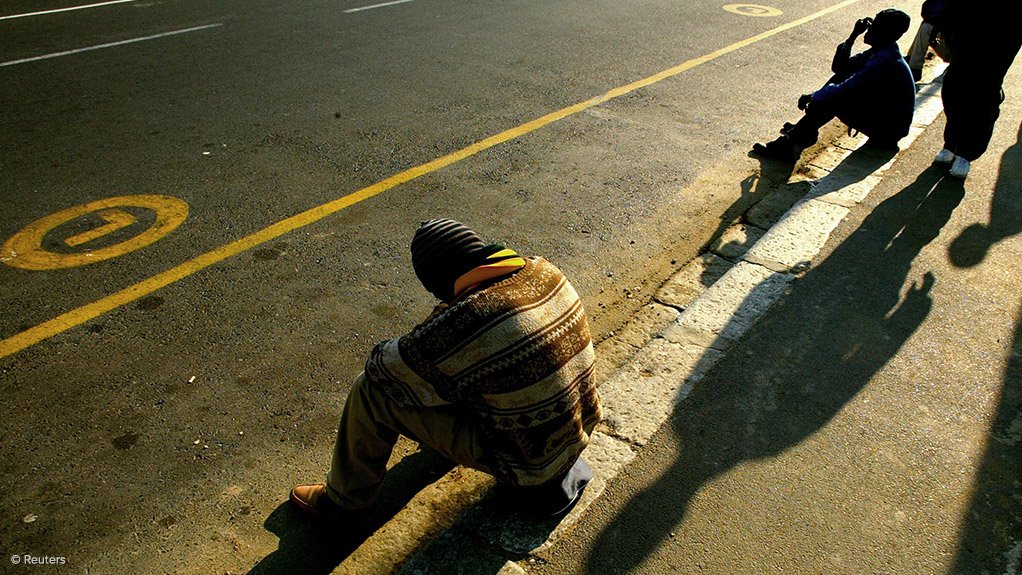South Africa’s official unemployment rate has increased by 1.4 percentage points to 29%, Statistics South Africa’s latest Quarterly Labour Force Survey shows.
This is the country’s highest unemployment rate since the first quarter of 2008.
The number of unemployed persons in the country now stands at 6.7-million people, up by 455 000 people in the second quarter of the year, compared with the first quarter.
Employment in the formal sector and in private households declined by 49 000, while the informal and agriculture sectors recorded increases of 114 000 and 5 000, respectively.
Formal employment declined by 49 000 as job losses in mining, transport, finance and private households during the quarter outweighed gains in industries such as agriculture, manufacturing, utilities, construction, trade and community services.
Job losses were, however, seen across the skills spectrum, with declines in the number of employed professionals, technicians, elementary and domestic workers recorded.
According to Investec, job losses “serve to aggravate the financial pressure many households are already experiencing, against a muted economic background”.
In order to see any significant job creation in South Africa, the financial services company said economic growth would have to be ignited and underpinned by effective policy implementation and policy certainty.
This, it added, was required to restore confidence and enhance the investment climate.
Meanwhile, from a geographic perspective, formal employment declined in the Western Cape, the Northern Cape, North West and Gauteng, with gains in the other five provinces.
According to estimates by consultancy PwC’s strategy and economics division, total formal sector employment declined by 1.4% during the period under review, compared with a year earlier, while the number of unemployed increased by 9.4% over the same period.
South Africa’s working-age population increased by 150 000, with results further indicating that discouraged work-seekers decreased by 248 000 and the not economically active population by 77 000, resulting in the net decrease of 326 000 in the number of those who were not economically active during the second quarter of the year.
The percentage of young persons aged between 15 and 24 who were not in employment, education or training decreased by 0.9 of a percentage point to 32.3%, or 3.3-million. Of the 20.4-million young people aged between 15 and 34, 40.3% were not in employment, education or training, reflecting a decrease of 0.3 percentage points compared with the first quarter.
According to Nedbank’s Corporate and Investment Banking (CIB) division, the outlook for the job market remains poor owing to weak confidence and growth prospects, in addition to the difficult policy environment.
In a statement on Tuesday, Nedbank CIB labelled the rise in the unemployment figure as “disappointing” and said that it “confirms the extent to which the economy is struggling to create employment”.
Despite recent indicators showing that the economy is likely to record growth in the second quarter, following a contraction in the first, the generally subdued economic environment in South Africa remains subdued, with a lack of demand pressures on inflation, Nedbank CIB elaborated.
“This, together with expected easier global monetary policies, could see a further interest rate cut later in the year, although much will depend on the firmness of the rand and other cost push factors,” it added.
For now, Nedbank CIB still forecasts a flat interest rate.
EMAIL THIS ARTICLE SAVE THIS ARTICLE ARTICLE ENQUIRY
To subscribe email subscriptions@creamermedia.co.za or click here
To advertise email advertising@creamermedia.co.za or click here











